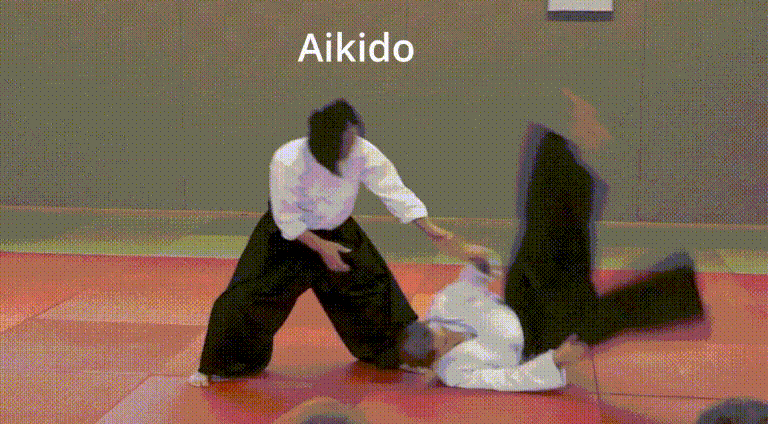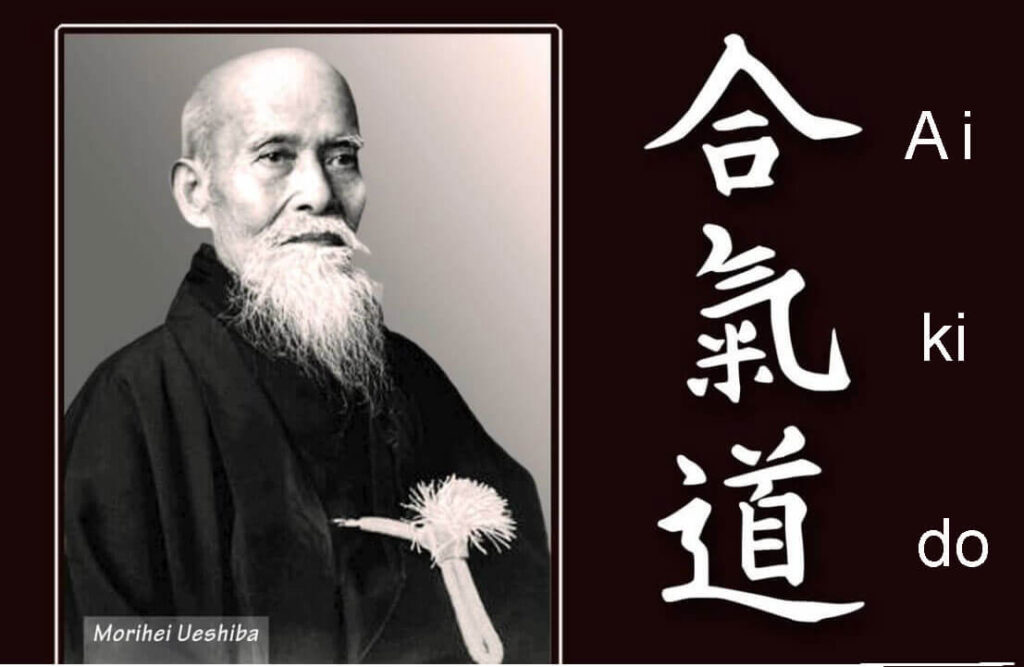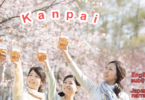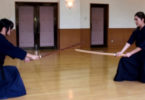Hi how’s your life treating you? Today’s subject is one of “Cool Japan” martial art, “Aikido”.
I once trained for a couple of years, in fact, Aikido which is one of Japanese martial arts for learning the skill of self-defence mainly.
But Aikido? With seeing Aikido’s lesson , 「isn’t that just a children’s game?」
I was greatly shocked when I heard that a stranger asked such the question.
Well then, let’s continue the story with the following video.
Contents
First, what’s Aikido?
Aikido is a modern Japanese martial art developed by Morihei Ueshiba (1883~1969) as a synthesis of his martial studies, philosophy, and religious beliefs. Aikido is often translated as “the way of unifying (with) life energy” or as “the way of harmonious spirit”.
Ueshiba’s goal was to create an art that practitioners could use to defend themselves while also protecting their attacker from injury.
Aikido’s techniques include: irimi (entering), turning movements (that redirect the opponent’s attack momentum), various types of throws and joint locks.
International dissemination
Aikido was first brought to the rest of the world in 1951 by Minoru Mochizuki with a visit to France where he introduced aikido techniques to judo students. He was followed by Tadashi Abe in 1952, who came as the official Aikikai Hombu representative, remaining in France for seven years. Kenji Tomiki toured with a delegation of various martial arts through 15 continental states of the United States in 1953. Later that year, Koichi Tohei was sent by Aikikai Hombu to Hawaii for a full year, where he set up several dojo (training place).
This trip was followed by several further visits and is considered the formal introduction of aikido to the United States. The United Kingdom followed in 1955; Italy in 1964 by Hiroshi Tada; and Germany in 1965 by Katsuaki Asai. Designated “Official Delegate for Europe and Africa” by Morihei Ueshiba, Masamichi Noro arrived in France in September 1961. Seiichi Sugano was appointed to introduce aikido to Australia in 1965. Today there are aikido dojo throughout the world.
Training
In aikido, as in virtually all Japanese martial arts, there are both physical and mental aspects of training. The physical training in aikido is diverse, covering both general physical fitness and conditioning, as well as specific techniques.
Because a substantial portion of any aikido curriculum consists of throws, beginners learn how to safely fall or roll. The specific techniques for attack include both strikes and grabs; the techniques for defense consist of throws and pins. After basic techniques are learned, students study freestyle defense against multiple opponents, and techniques with weapons.
Fitness
Ukemi is very important for safe practice, just the same as “judo”.
Physical training goals pursued in conjunction with aikido include controlled relaxation, correct movement of joints such as hips and shoulders, flexibility, and endurance, with less emphasis on strength training. In aikido, pushing or extending movements are much more common than pulling or contracting movements. This distinction can be applied to general fitness goals for the aikido practitioner.
In aikido, specific muscles or muscle groups are not isolated and worked to improve tone, mass, or power. Aikido-related training emphasizes the use of coordinated whole-body movement and balance similar to yoga or pilates. For example, many dojos begin each class with warm-up exercises, which may include stretching and ukemi (break falls).
above : Ukemi (受け身) is very important for safe practice
Roles of uke and tori
Aikido training is based primarily on two partners practicing pre-arranged forms (kata) rather than freestyle practice. The basic pattern is for the receiver of the technique (uke) to initiate an attack against the person who applies the technique—the 取り tori, or shite 仕手 (depending on aikido style), also referred to as 投げ nage (when applying a throwing technique), who neutralises this attack with an aikido technique.
Both halves of the technique, that of uke and that of tori, are considered essential to aikido training. Both are studying aikido principles of blending and adaptation. Tori learns to blend with and control attacking energy, while uke learns to become calm and flexible in the disadvantageous, off-balance positions in which tori places them. This “receiving” of the technique is called ukemi. Uke continuously seeks to regain balance and cover vulnerabilities (e.g., an exposed side), while tori uses position and timing to keep uke off-balance and vulnerable. In more advanced training, uke will sometimes apply reversal techniques (返し技 kaeshi-waza) to regain balance and pin or throw tori.
Weapons
Disarming an attacker using a “sword taking” technique. Weapons training in aikido traditionally includes the short staff (jō), wooden sword (bokken), and knife (tantō). Some schools incorporate firearm-disarming techniques. Both weapon-taking and weapon-retention are taught. Some schools, such as the Iwama style of Morihiro Saito, usually spend substantial time with bokken and jō, practised under the names aiki-ken, and aiki-jō, respectively.
The founder developed many of the empty-handed techniques from traditional sword and spear movements. Consequently, the practice of the weapons arts gives insight into the origin of techniques and movements, and reinforces the concepts of distance, timing, foot movement, presence and connectedness with one’s training partner(s).
Mental training
Aikido training is mental as well as physical, emphasizing the ability to relax the mind and body even under the stress of dangerous situations. This is necessary to enable the practitioner to perform the bold enter-and-blend movements that underlie aikido techniques, wherein an attack is met with confidence and directness. Morihei Ueshiba once remarked that one “must be willing to receive 99% of an opponent’s attack and stare death in the face” in order to execute techniques without hesitation. As a martial art concerned not only with fighting proficiency but with the betterment of daily life, this mental aspect is of key importance to aikido practitioners.
Uniforms and ranking
Hakama are folded after practice to preserve the pleats. Aikido practitioners (commonly called aikidōka outside Japan) generally progress by promotion through a series of “grades” (kyū), followed by a series of “degrees” (dan), pursuant to formal testing procedures. Some aikido organizations use belts to distinguish practitioners’ grades, often simply white and black belts to distinguish kyu and dan grades, though some use various belt colors. Testing requirements vary, so a particular rank in one organization is not comparable or interchangeable with the rank of another. Some dojos do not allow students to take the test to obtain a dan rank unless they are 16 or older.
rank: kyū white belt (mudansha / yūkyūsha) Upper rank : dan black belt (yūdansha)
The uniform worn for practicing aikido (aikidōgi) is similar to the training uniform (keikogi) used in most other modern martial arts; simple trousers and a wraparound jacket, usually white. Both thick (“judo-style”), and thin (“karate-style”) cotton tops are used. Aikido-specific tops are available with shorter sleeves which reach to just below the elbow.
Most aikido systems add a pair of wide pleated black or indigo trousers called a hakama (used also in kendo and iaido). In many schools, its use is reserved for practitioners with (dan) ranks or for instructors, while others allow all practitioners to wear a hakama regardless of rank.
If you wish to be a practitioner, you can contact them below
























